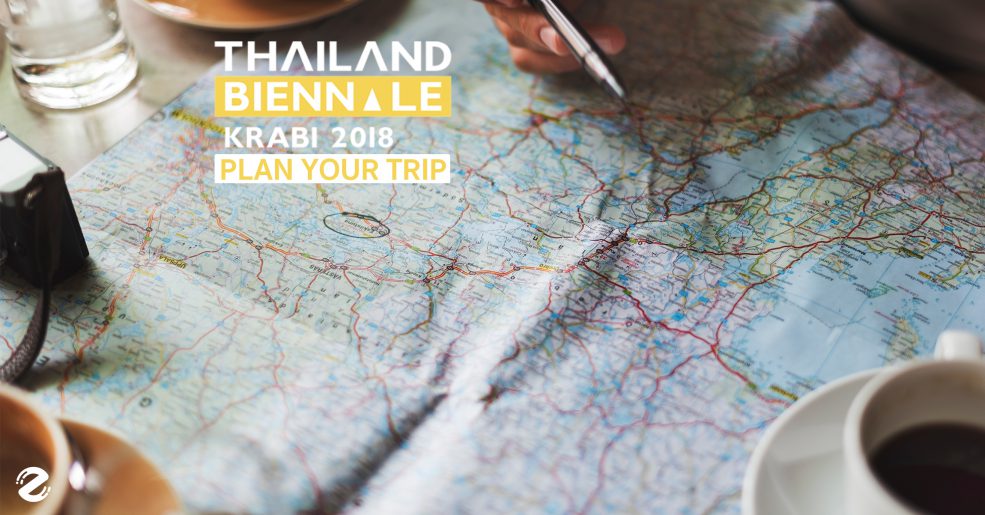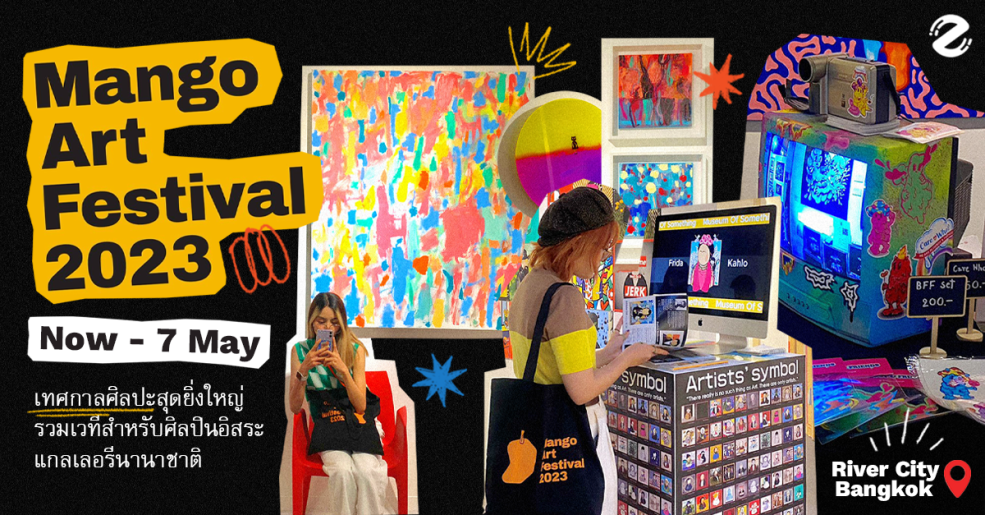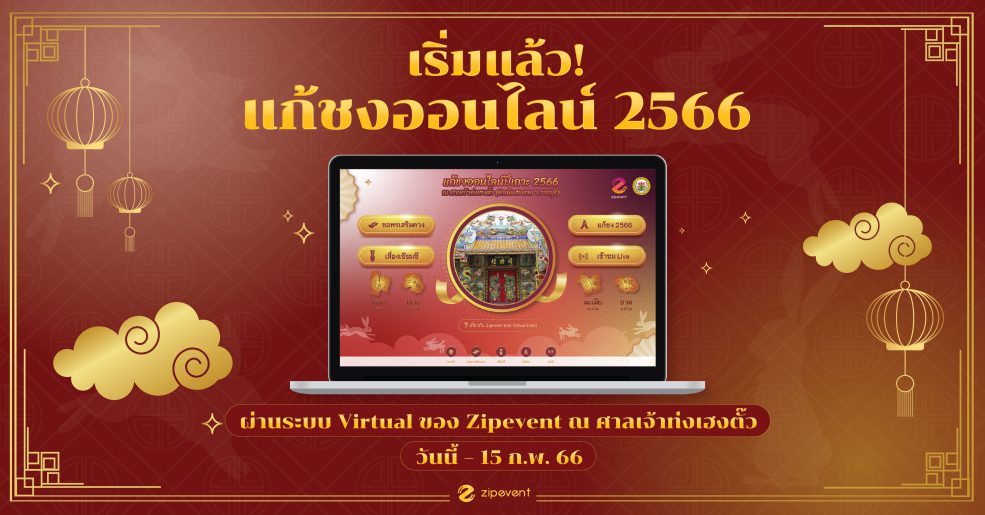As Biennale art pieces are installed all over Krabi province, here are friendly guidelines to help plan your art-hopping trip to The Edge of Wonderland. Whether you’re traveling solo, with your partner in crime or with your kids, these 6 routes have got it all covered, starting from Krabi International Airport. Thailand Biennale
1. Four Colors Make a Forest
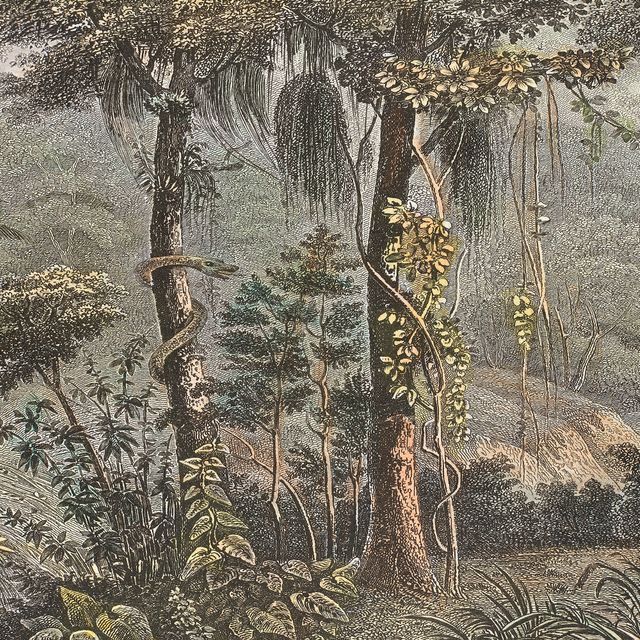
Donna Ong’s practice is inspired not only by the tropical flora and fauna, but also the colonial gaze that presupposed our vision of them. Her artworks always traces into the historical images of tropical landscapes. One of her primary sources is a collection of stylized lithographs produced in the 18th century by the western explorers for their audiences who lived in temperate zones. Four Colours Make a Forest focuses on the relationship between these historical representations, romanticization and idealization through the production of tropical images and our embedded escapist desire to buy into these imagined paradises. She built a wire mesh fence that also resembles a typical commercial billboard. It presents a collage that consist of images of tropical landscapes from her archive on one side. On the other side of the artwork is an image that is a Digital Camouflage pattern used by the military, which is the simplest representation of the tropics though it signifies a very different meaning.
2. A Great, Correct, Elegant, Spotless and Tailored Refurbishment
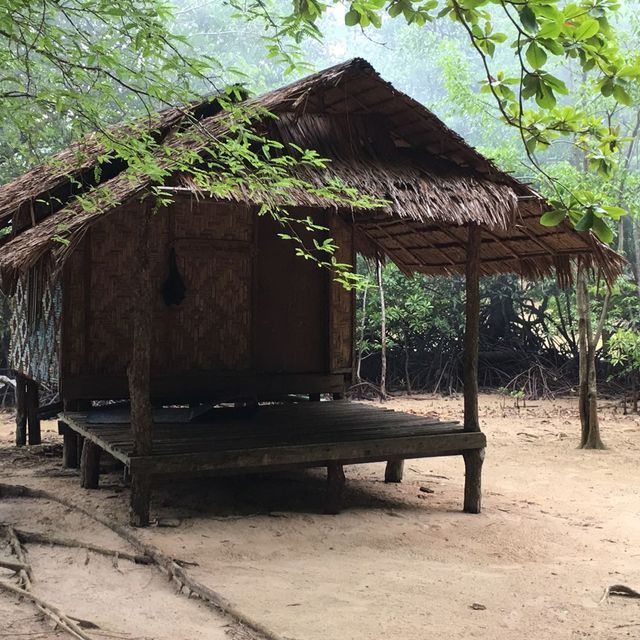
Only a few minutes away from the city centre, Khao Khanab Nam Cave is a very small island where both flora and fauna grow abundantly. Zhang Peili’s work challenges visitors’ expectations of finding an undisturbed natural paradise. As visitors approach the installation they are confronted with a façade that looks like a poor and dismissed house, yet its interiors have been refurbished with a luxurious and modern look. Silver paper with an elegant design runs along the four sides of the room and a sophisticated ceiling lamp delicately lights the environment. This is not the only contradiction. The outer façade hints at an old building in which one would expect to find local, everyday objects. Instead, all of the furniture was made in China and imported to transform the interiors into a boutique hotel. The two paradoxical realities, outside/inside, invite us to experience the contradictions of everyday life and to question our perceptions.
3. Football Field for Buffalo
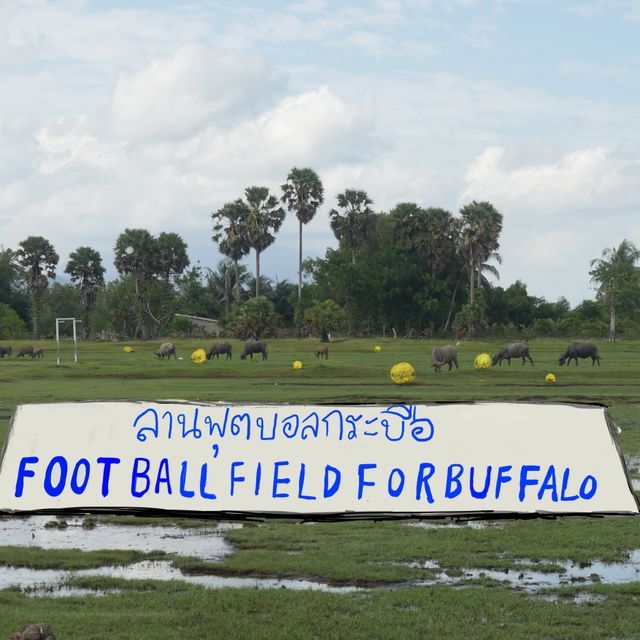
The artist is interested in the traditional lifestyle of the Koh Klang people. Although the island’s residents have become very engaged with eco-tourism in recent years, he found that the people continue to take pleasure in sports and nature. In particular, they still maintain their connections with animals, mainly chickens, goats and buffaloes. At the same time, Fukasawa is also interested in the oral history of the island.He learned that the sports of boat racing, kite flying and football plays a significant role in bringing the community together. Inspired by the popular chicken competition, where competition and animal meets, the artist creates a football field for buffalo and an amphitheater on an abandoned, rich field for the audience. His work gives an opportunity for the communal buffaloes, who are the regular workers in the field, to become key players. Thus highlighting the unique bounds between humans and nature on this island.
4. Two Visions of the Wonderland
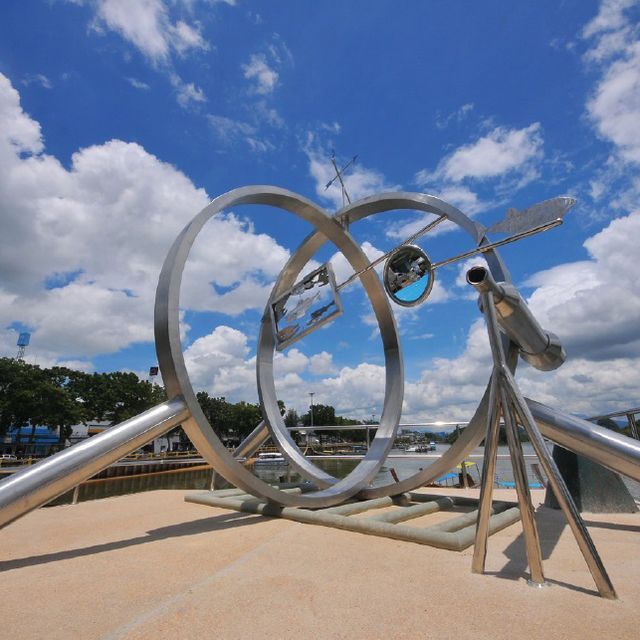
Kamol Tassananchalee creates artworks in various media to represent the relationship between life, experience, cultures, environment, and art. Many of Tassananchalee’s works are commissioned to be installed in public spaces. Responding to the concept of Thailand Biennale 2018’s Edge of the Wonderland Tassananchalee creates a large-scale sculptural structure inspired by the shape of two magnifying glass and installed it on the bank of Krabi River in the heart of Krabi City. By placing the work to face the beautiful scenery of a natural site, the artist urges the audience to explore the magnificent environment of Krabi.In addition, he also displays the mirror to reflect images of the audience and the pictures of underwater scenes in the LED screen attached at the base of the artwork. The artwork connects the audience to the multiple visions of the wonderland; the visions to reality of the surrounding space, the vision of themselves surrounded by Krabi’s environment, and the vision that contains an unreal experience of the underwater world.
5. Story of Love
Vichoke Mukdamanee, a Thai National Artist, is inspired by the story of love between Naga, the mythical creature that has the form of a great snake, and a local human. The story is part of the famous folk tale that relates to the mythical belief regarding the beginning of several landmarks and island in Krabi and nearby provinces. Using objects from local wedding ceremonies, Mukdamanee creates semi-abstract metal sculptures and animates the forms. The multiple, sculptural structures are lined up to imitate a ceremony or ritual on the sandy bank of the Krabi River, which the artist sees as the connecting space between water and land, the imaginative world and reality, and between nature and humans. Story of Love brings audiences back to local narratives and recalls the harmonious feelings among people, no matter how different they are.
6. Nobody Nose: Based on a Fake Story
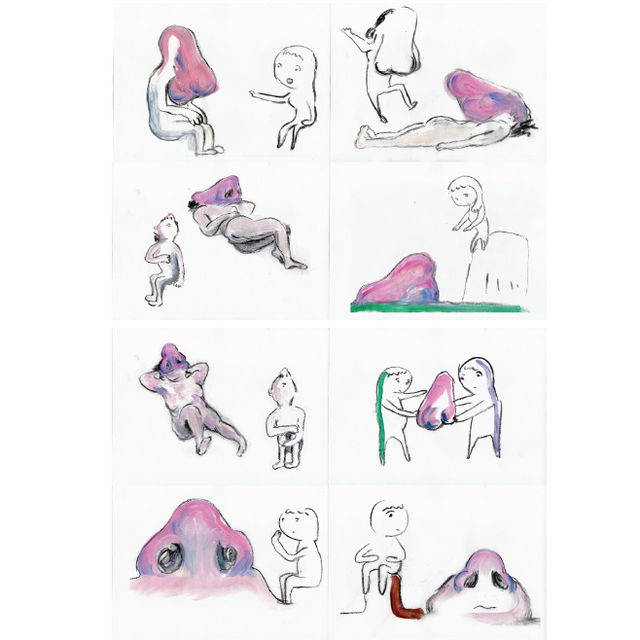
Mayrhofer-Ohata’s new work for the first Thailand Biennale, Nobody Nose: Based on a Fake Story, is a fictional extension into the real. The artist-duo created a fictional nose-character to contaminate a small lake and its landscape with symbolic and imaginary meaning. The floating, large-scale nose sculpture plays with the search for information and implicated ethics. The myth-making object mainly addresses environmental issues, inviting the viewers to explore the artwork as a placeholder for reality. A nose sculpture keeps itself above the water. It is very simple but purified by contemplation, the winds of the heavens dance between heads and hearts. The project presents a nose imagined as a bridge between outside and inside, the edge where exchange happens, where something is breathing the breath of life. Even if one is deeply asleep or meditating at the highest level of the mind, one is always breathing. A living soul needs a mindful breath, there is a spirit who dwells in one’s soul: let it take you wherever it takes you.
7. Life Is Hard, Why Do We Make It So Easy?

Working with a local organization of orchid growers in the Ao luek district to create a botanical installation from local orchid species, Zheng Bo’s “Life is hard. Why do we make it so easy?” will thrive in Thanbok Khorani National Park during the four months of the exhibition period. The installation’s title is inspired by Jon Jondai’s famous talk “Life is easy Why do we make it so hard?” Jondai is a farmer and one of Thai’s activist for sustainable living. The artist modified Jon Jondai’s statement to point out another aspect of the ecological crisis. Mankind has made lives too easy while making the lives of other beings too difficult; life on earth is not easy and is supposed to be hard.
8. Rumors from the Sea
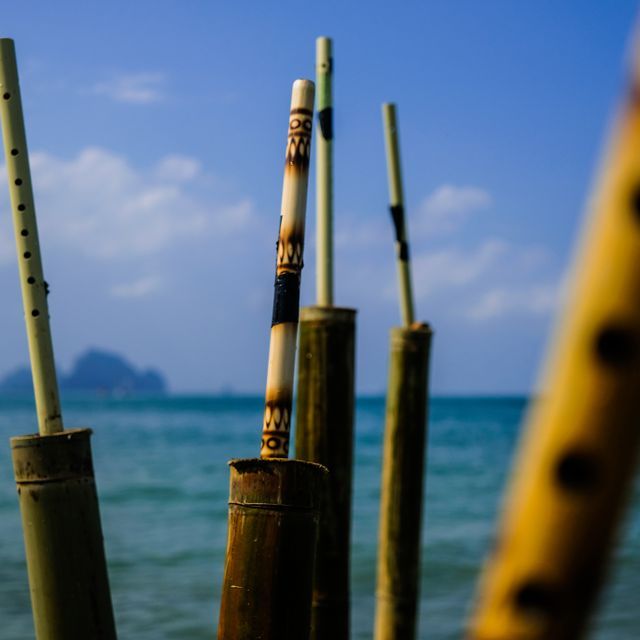
Rumors from the Sea is a site-specific sound installation inspired by the form of the bamboo seawalls used in Thailand as a simple method to battle against coastal erosion. The installation, consists of hundreds of flute devices made from bamboo, similar to the material used to slow down the current from hitting and eroding the shore. The project is a tribute to the perseverance of those communities. Simultaneously, working with students from the Baan Khlong Muang school, the artist will organise a workshop to enable each to make their own bamboo flute. These devices will be used to generate a sound composition for a bamboo-flute orchestra/ installation, played by the waves.
9. Did You Leave Your Island

On her flight to Krabi in 2017, A K Dolven sat next to a Thai woman who travelled to bring back 200 books to a Buddhist temple in Kristiansand, Norway, where she has been living for 13 years. Both exchanged personal experiences of Norway, while anticipating their arrival to a country of which was to be discovered by one and re-discovered by the other. For Thailand Biennale, Dolven proposes a site that exists in between: a site to engage with fragments of memories and to discover the unknown. Located between two rocks at the end of Nopparatthara beach, the work is a house that is only accessible during low-tide. During high-tide the orientation shifts to an isolated, dream-like vision for onlookers ashore. The interior is decorated with a few ubiquitous items from Krabi, with windows framing parts of the landscape. Visitors will hear the voices in Thai, English and Norwegian, recorded from the Thai community in Norway, reflecting on the place they had left behind and where they are currently.This work is a collaboration between A K Dolven, architect Bancha Ma, and builder Bang Nu.
10. Gilding the Border
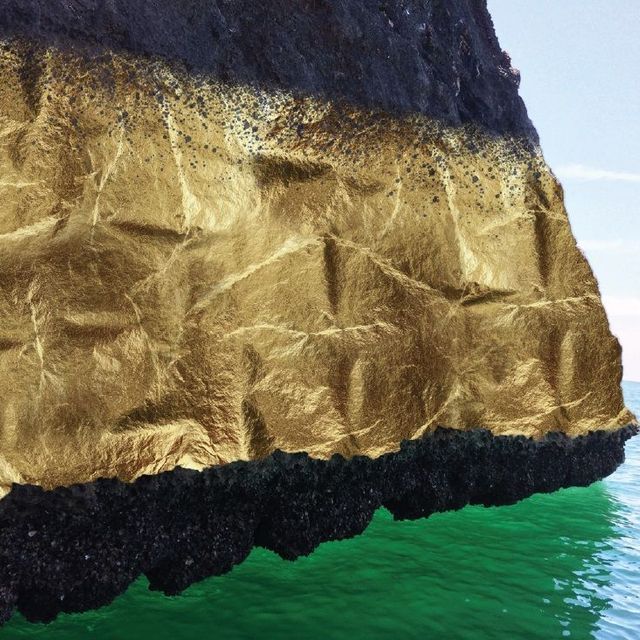
Gilding the Border uses gold to represent the connection between history, religions, rituals, and people lives. Its associations range from those of mystical illumination to monetary investment, from imperishability to merit accumulation. The artwork reconnects the sacred with the earthly, the immaterial with the material, suggesting perhaps that one can find cosmic value in the natural world.
Search for more events :
Line: @Zipevent
Instagram: @zipevent
Website: www.zipeventapp.com
Twitter: @zipeventapp
Facebook: @zipevent

